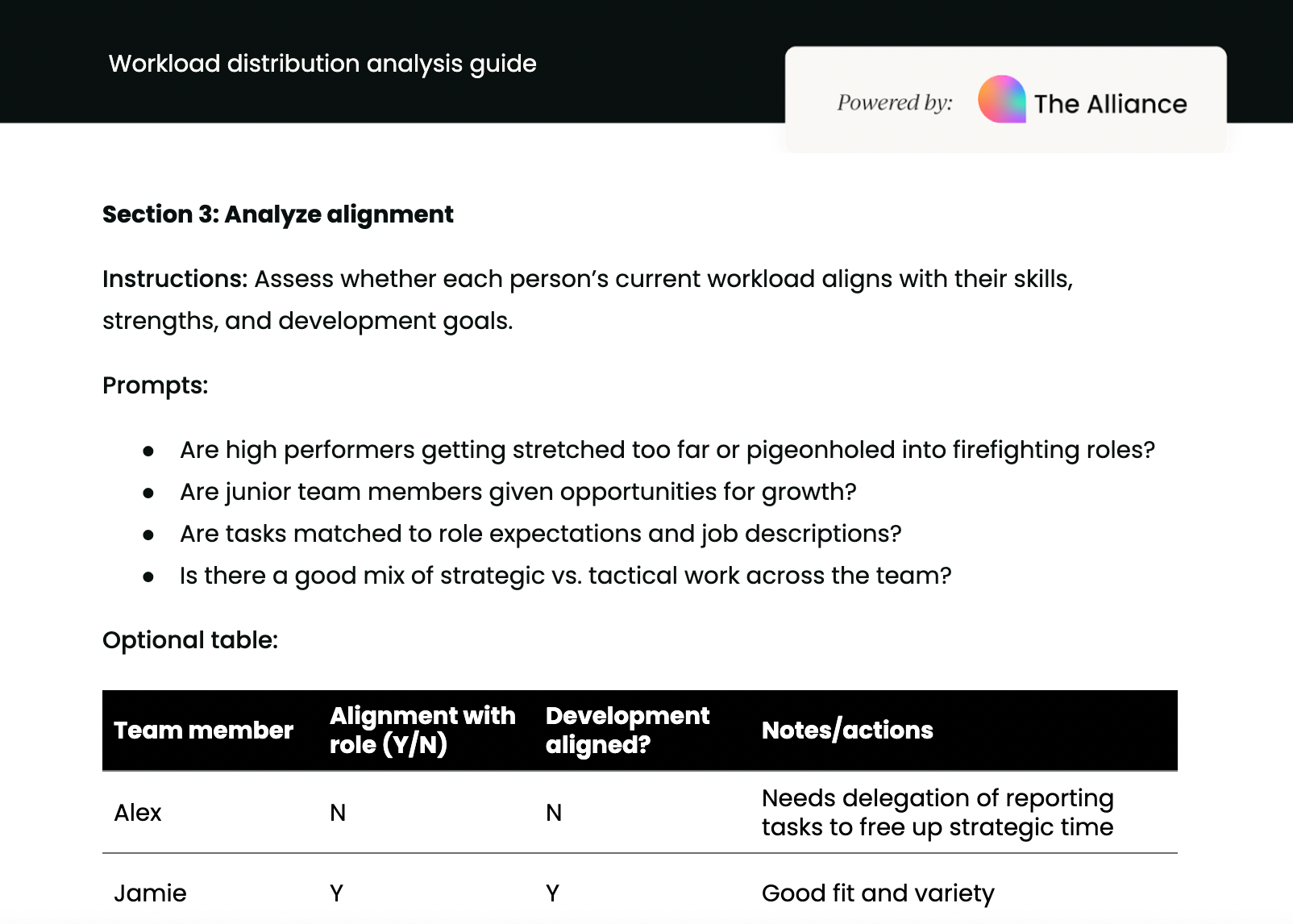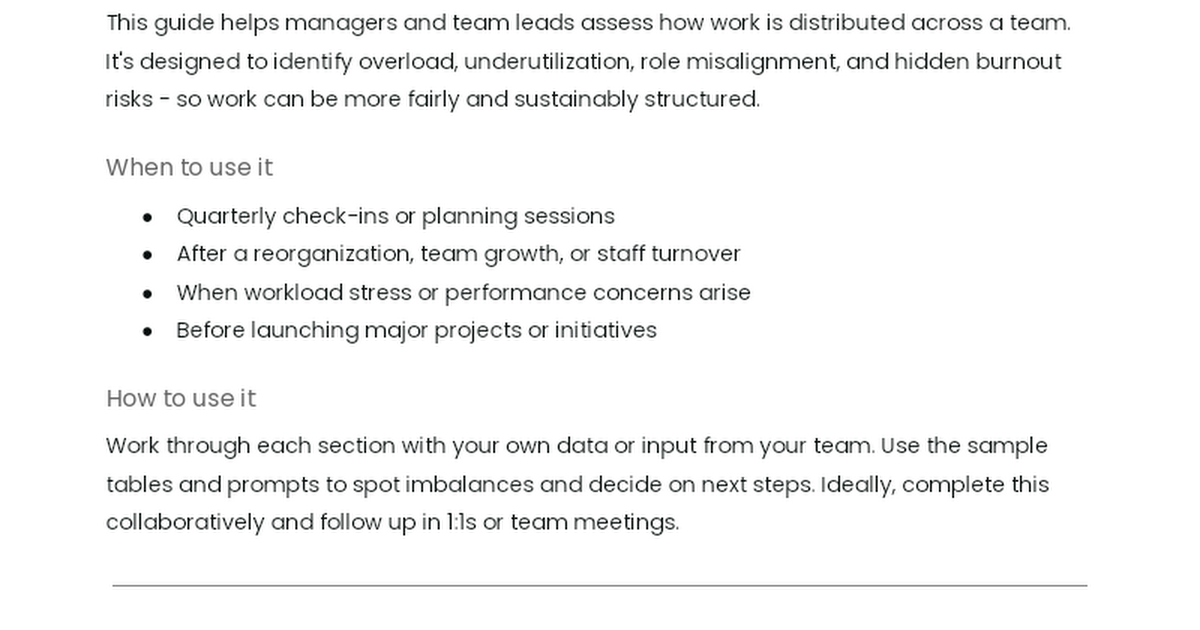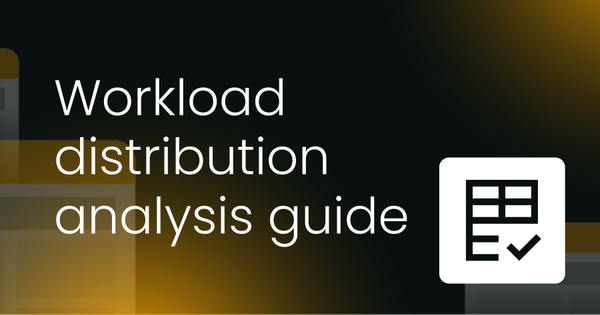As a leader, you know that workload balance can make or break a team’s performance and your people’s wellbeing.
Our workload distribution analysis guide gives you a practical, structured way to spot imbalances, address them early, and create a fairer, more sustainable workload across your team. With simple tables, prompts, and examples, you can quickly turn observations into actionable steps that improve productivity and morale.
What is a workload distribution analysis guide template?
This template is a step-by-step tool that helps you assess how work is spread across your team. It walks you through gathering data, evaluating workload balance, checking role alignment, identifying burnout risks, and creating a rebalancing action plan.
You’ll find clear prompts, sample tables, and even “smart shortcuts” using common workplace tools - making it easy to use whether you prefer manual review or tech-enabled insights.
Who is it for?
This guide is ideal for:
- HR professionals supporting workforce planning.
- People leaders who manage teams of any size.
- Project managers overseeing complex initiatives.
- Operations managers responsible for resource allocation.
If you’re responsible for ensuring your team works at a healthy, productive pace, this guide is built for you.
Why it’s useful
Workload issues aren’t always obvious until they’ve already caused stress, disengagement, or missed deadlines. This guide helps you:
- Spot uneven distribution early.
- See where urgent work is piling up on one person’s plate.
- Match tasks to skills and development goals.
- Identify signs of burnout or disengagement.
- Create a realistic, actionable plan to rebalance work.
The payoff? A more engaged, motivated team that’s set up to deliver consistently without burning out.
How to use the template
- Gather workload data: Record each team member’s responsibilities, active projects, and estimated weekly hours.
- Assess balance: Use prompts and optional scoring to see who’s overloaded or underutilized.
- Check alignment: Make sure tasks match people’s skills and career goals.
- Spot burnout risks: Look for warning signs such as overtime, withdrawal, or lack of challenge.
- Create an action plan: Decide what to delegate, automate, or redistribute, and set timelines for follow-up.
Download the workload distribution analysis guide
If you’re not already a member, simply sign up for our free plan and refresh this page to access your template.





 Follow us on LinkedIn
Follow us on LinkedIn 
